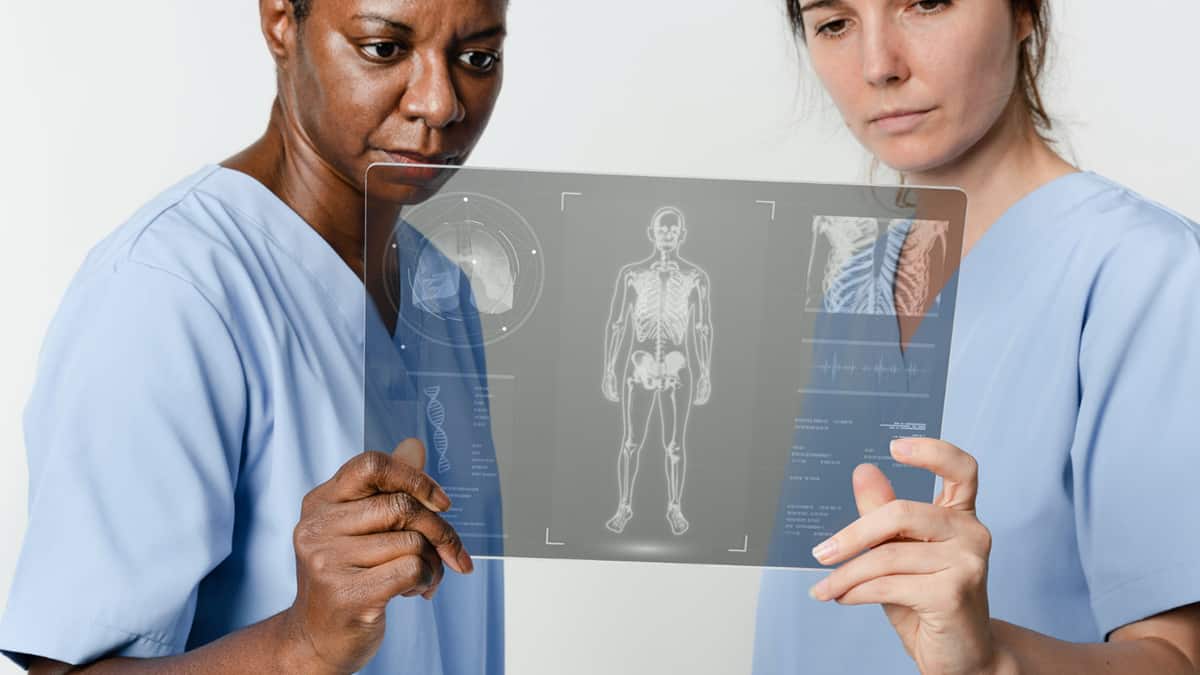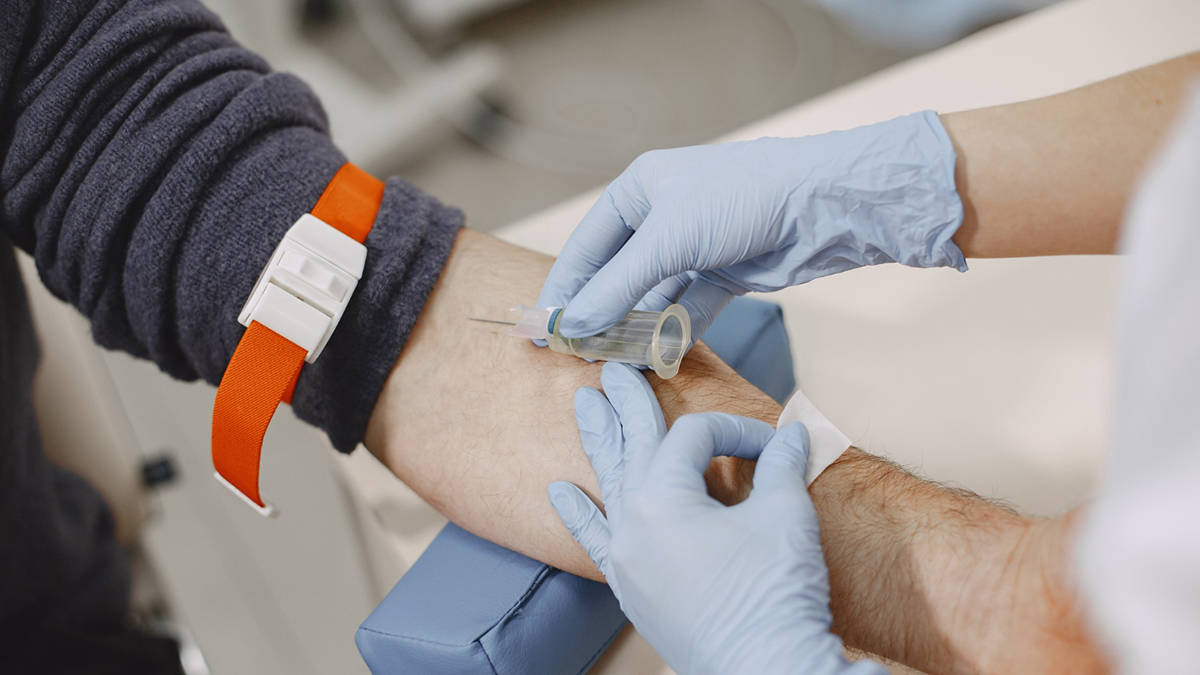The Latest Screening Guidelines for Colon, Prostate, and Breast Cancer
Physical Health

About 2 million people are expected to be diagnosed with cancer in the United States (US) in 2023. Of these, almost 40% of new cancers diagnosed will be colon, prostate, or breast cancer.
The good news is that there are tests available to detect these cancers before you see any symptoms. These tests are known as cancer screening tests.
What Is Cancer Screening?
Cancer screening is a test you can take to detect cancer before you have any symptoms. A screening test can’t diagnose cancer. Instead, these tests look for abnormal results to see if you need additional tests.
There are different types of tests that screen for cancer, such as:
- Physical exam — an exam that checks your body for physical signs of cancer, such as lumps
- Laboratory tests — tests that use blood, urine, stool, or tissue from your body to test for cancer
- Imaging tests — tests that create images of the inside of your body
- Genetic tests — laboratory tests that check whether you have a change in your genes that could indicate you have cancer or are more likely to develop cancer
Colon Cancer Screening
Colon cancer is the third most common cancer in men and women, excluding skin cancers. The risk of developing colon cancer is about 1 in 23 for men and 1 in 26 for women. The American Cancer Society (ACS) estimates that more than 50,000 Americans will die of colon cancer in 2023.
What Is Colon Cancer?
Colon cancer is cancer that starts in your colon. Colon cancer is often grouped with rectal cancers and referred to as colorectal cancer. Your colon is also known as your large intestine — a part of your digestive system (also called your gastrointestinal or GI system). Your rectum is the last part of your colon that joins your anus.
Who Is at Risk for Colon Cancer?
Colon cancer is most commonly diagnosed in people aged 65 to 74. It’s slightly more common in men compared to women. Some ethnic groups have a higher risk of colorectal cancer, such as:
- American Indians
- Alaska Natives
- Ashkazani Jews (Jews of Eastern European descent)
- African Americans
There are several risk factors that can increase your risk of developing colon cancer, including:
- Being overweight
- Not getting enough exercise
- Diets high in red meat or processed meat
- Low levels of vitamin D
- Smoking tobacco
- Alcohol use
- Family history of colon cancer
- Having an inherited genetic syndrome such as Lynch syndrome (also known as hereditary non-polyposis colon cancer) or familial adenomatous polyposis (FAP)
- Having a history of inflammatory bowel disease such as Crohn’s disease or ulcerative colitis
Who Needs Colon Cancer Screening?
The ACS recommends regular colon cancer screening for all adults between the ages of 45 and 75.
You may need to start colon cancer screening before you turn 45 if you have a high risk of developing colon cancer. You might have a high risk of colon cancer if:
- Colon cancer runs in your family
- You’ve had colon cancer before
- You have a family history of colorectal cancer syndrome
- You have inflammatory bowel disease
- You’ve had abdominal or pelvic radiation therapy for cancer in the past
People between the ages of 76 and 85 may continue colon cancer screening based on the following factors:
- Personal preference
- Overall health
- Life expectancy
- Prior history of screening
Colon cancer screening isn’t recommended for people over the age of 85.
What Types of Tests Are Used to Screen for Colon Cancer?
There are two main types of tests that can screen for colon cancer — stool-based tests and visual exams.
Stool-Based Tests
A stool-based test checks your stool (poop) for signs of colon cancer. These tests may be easier for some people because they can be done at home.
Examples of stool-based tests include:
- Fecal immunochemical test (FIT) — This test checks for hidden (also called occult) blood in your stool. This is helpful because cancer can cause fragile blood vessels that bleed more easily.
- Guaiac-based fecal occult blood test (gFOBT) — This test also checks for blood in the stool using a different chemical reaction than a FIT. You may have to avoid eating red meat for three days before this test. You should also avoid taking nonsteroidal anti-inflammatory drugs (NSAIDs) and vitamin C supplements 7 days before this test.
- Stool DNA test — This test checks your stool for hidden blood and for abnormal genetic mutations (changes) from a cancer cell.
If you choose a stool-based test to screen for colon cancer, you should be screened more often than with a visual exam. FIT and gFOBT should be done every year, while a stool DNA test can be completed once every 3 years.
Visual Exams
During a visual exam, a doctor will look at the inside of your colon and rectum to check for abnormal areas.
Examples of a visual exam used for colon cancer screening include:
- Colonoscopy — During this test, a flexible tube with a light and camera is inserted through your anus and passed through your entire colon.
- Virtual colonoscopy — This test uses a computed tomography (CT) scan to create a three-dimensional (3D) image of the inside of your colon.
- Flexible sigmoidoscopy — This test is similar to a colonoscopy but doesn’t examine the entire colon.
Visual exams require time to prepare before the test (bowel preparation) and may require you to be sedated. However, these tests can be performed less often compared to stool-based tests:
- Colonoscopy — once every 10 years (depending on prior results)
- Virtual colonoscopy — once every 5 years
- Flexible sigmoidoscopy — once every 5 years

Prostate Cancer Screening
Prostate cancer is common — it’s the second most common cancer diagnosed in men in the US. About 1 in 8 men are diagnosed with prostate cancer during their lifetime. Prostate cancer is the second leading cause of cancer death in men, responsible for 1 death in every 41 men.
Early detection with screening tests can help increase the survival rate for prostate cancer.
What Is Prostate Cancer?
Prostate cancer can occur when cells in the prostate begin to grow out of control. The prostate is a gland only found in people assigned male at birth. This gland makes fluid that is found in semen and is found between the bladder and rectum.
Who Is at Risk for Prostate Cancer?
Prostate cancer is most commonly diagnosed in men older than 65 years. It’s more common in African American men and non-Hispanic Black men.
Risk factors that make it more likely for you to develop prostate cancer include:
- Living in North America, Europe, Australia, or the Caribbean islands
- Having a father or brother diagnosed with prostate cancer
- Having an inherited genetic mutation such as a BRCA1 or BRCA 2 mutation or Lynch syndrome
Who Needs Prostate Cancer Screening?
The ACS recommends that men with an average risk of developing prostate cancer start screening at age 50.
Your doctor may recommend that you start prostate cancer screening at age 45 if you have a high risk of developing prostate cancer, including:
- African American men
- Men with one first-degree relative (father or brother) who was diagnosed with prostate cancer before age 65
Men with more than one first-degree relative diagnosed with prostate cancer before age 65 may be recommended to start screening at age 40.
What Types of Tests Are Used to Screen for Prostate Cancer?
There are two types of tests used to screen for prostate cancer — a prostate-specific antigen (PSA) blood test and a digital rectal exam (DRE).
PSA Blood Test
This test uses a sample of your blood to measure the amount of a protein called the prostate-specific antigen in your blood. When your prostate is healthy, it only releases small amounts of PSA. Cancer cells may release more PSA into your blood. An increased PSA could indicate cancer.
If your PSA level is 4 nanograms per milliliter (ng/mL) or higher, your doctor may recommend further testing. Additional testing for prostate cancer usually involves taking a tissue sample from your prostate (a prostate biopsy) or performing additional advanced imaging (such as an MRI of the prostate).
It’s important to know that your PSA can be increased by factors other than cancer, such as medications, other medical conditions, and even riding a bicycle.
The frequency of a PSA blood test depends on your results.
- If your PSA is less than 2.5 ng/mL, you should check your PSA once every 2 years.
- If your PSA is 2.5 ng/mL or higher, you should check your PSA once every year.
Digital Rectal Exam
During a DRE, your doctor will insert a finger into your rectum to feel for lumps that could be cancer. While this test may be briefly uncomfortable, it is over quickly.
Breast Cancer Screening
Breast cancer is the most common cancer diagnosed in women in the US. About 1 in 8 women are diagnosed with breast cancer. The ACS estimates that more than 43,000 women will die of breast cancer in 2023.
What Is Breast Cancer?
Breast cancer happens when cells in the breast start to grow out of control. While breast cancer is much more common in women, it’s possible for men to get breast cancer.
Who Is at Risk for Breast Cancer?
Most people are diagnosed with breast cancer after the age of 55.
Risk factors for breast cancer include:
- Older age
- Genetic mutations
- Starting menstrual periods before the age of 12
- Having dense breasts
- Having breast cancer before
- Family history of breast or ovarian cancer
- History of radiation therapy to the chest
- Past exposure to the drug diethylstilbestrol (DES)
- Taking hormone replacement therapy
- Having a first pregnancy after 30 years old
- Not breastfeeding
- Never having a full-term pregnancy
- Being overweight
- Drinking alcohol
Who Needs Breast Cancer Screening?
Breast cancer screening generally only occurs in women. Breast cancer is rare in men, so screening for breast cancer isn’t routinely offered. The ACS recommends that women with an average risk of breast cancer have the option to begin screening for breast cancer at 40 years old. All women should begin screening at age 45.
You may start yearly breast cancer screening at the age of 30 if you have a high risk of breast cancer. According to the ACS, people with a high risk of breast cancer include:
- Women with a lifetime risk of breast cancer greater than 20%
- Having a mutation in a gene that increases the risk of breast cancer called BRCA1 or BRCA2
- Having a first-degree relative with a BRCA1 or BRCA2 gene mutation
- Receiving radiation therapy to the chest between the ages of 10 and 30
- Women with certain syndromes — such as Li-Fraumeni syndrome, Cowden syndrome, or Bannayan-Riley-Ruvalcaba syndrome
What Types of Tests Are Used to Screen for Breast Cancer?
There are two types of tests used for breast cancer screening — a mammogram and a breast exam.
Mammograms
A mammogram is the primary method of breast cancer screening. Mammograms use X-rays to create a picture of the breast to detect tumors too small to feel.
The ACS recommends that breast cancer screening should continue for as long as a woman is healthy and expected to live at least 10 more years. The frequency of testing depends on a woman’s age:
- Women with an average risk of breast cancer have the option to get a yearly mammogram at age 40.
- Women between the ages of 45 and 54 should get a mammogram once a year.
- Starting at age 55, women have the choice to continue with yearly mammograms or switch to every other year.
Breast Exam
A breast exam can be performed by a healthcare professional (clinical breast exam) or by yourself (breast self-exam). The ACS doesn’t recommend a regular schedule for a breast exam, but it’s important for you to be familiar with how your breasts look and feel so you can notice if any changes occur.
What Are the Risks of Cancer Screening?
Although finding cancer earlier often improves your outlook, that’s not always the case. For example, prostate cancer screening may not help to improve your health or help you live longer if the cancer has already spread to other parts of your body (metastasized).
Other possible risks of cancer screening include:
- Anxiety and additional unnecessary testing due to a false-positive result
- Radiation exposure from X-rays
- Overdiagnosis — when cancer is found and treated but possibly wouldn’t have caused harmful symptoms
- Complications from diagnostic tests — biopsy complications include pain, infection, and fever
Talk to your healthcare provider about the best cancer screening options for you.
Putting It All Together

Most cancers become more likely to develop as you get older. Talk to your doctor about which cancer screening tests you need based on your age and specific risk factors. You may need screening for cancers other than colon, prostate, and breast cancer.
Table 1. Summary of ACS Recommendations for Ages When Cancer Screening Should Begin
| Type of Cancer | Age When Cancer Screening Begins | |
|---|---|---|
| Average Risk | Higher Risk | |
| Colon Cancer | 45 | Talk to your doctor |
| Prostate Cancer | 50 | 40 or 45 (depending on how many first-degree relatives diagnosed with prostate cancer you have) |
| Breast Cancer | 40 or 45 (option to start at 40, but everyone should begin at age 45) | 30 |